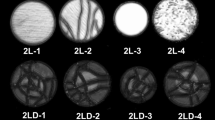Abstract
Delamination in the interlayers of multi-layer systems can cause a degradation in functionality, stability and life span of such systems. This is even more pertinent for systems at high temperatures. Laser flash analysis (LFA) has long been used for thermophysical properties measurements at high temperatures. In the European Metrology Programme for Innovation and Research (EMPIR) funded JRP 17IND11 Hi-TRACE project, the National Physical Laboratory (NPL) is developing multi-layer reference artefacts, including both fully bonded and partially de-bonded systems for validating thermal characterisation of multi-layer systems at temperatures from room temperature to above 1000 °C using LFA. The sensitivity studies carried out before creating the partially debonded artefacts have shown that the measurement area of the detector is one the important parameters that affect the accuracy of the thermal characterisation using LFA. However, this parameter is unknown to users of the early version of the Netzsch LFA 427, as it has negligible effect on radially homogenous samples which LFA is typically used for. This paper details the effect of measurement area on thermal characterisation of artefacts with partial debonding in the interface using LFA. For a bi-layer IG-210 grade graphite-hafnium foil system with a 6 mm diameter defect at the centre of the foil interface, variation in the measurement area can change the heat pulse transmission half-rise time by up to ~ 40%. Three methods to determine the system measurement area are discussed. The physical measurement diameter for the LFA 427 at NPL was estimated to be 7.7 mm ± 0.3 mm, independent of temperature. Within the uncertainty range of the measurement diameter, the thermal conductance of the defect region and the average heat transfer coefficient (HTC) can vary by ± 36% and ± 3.5% respectively. It is important to remember that this change is for a defect of 6 mm diameter which is a significant portion of the measurement area. For much smaller defects a much smaller change can be expected.













Similar content being viewed by others
Data Availability
All data generated or analysed during this study are included in this published article.
References
W.J. Parker, R.J. Jenkins, C.P. Butler, G.L. Abbott, J Appl Phys. 32, 1679–1684 (1961)
L. Wright, A. Farooqui, J. Wu, R. Morrell, M. Pekris, M. Whiting, In: 34th International Thermal Conductivity Conference (ITCC) and the International Thermal Expansion Symposium (ITES) (DEStech Publications Inc, Wilmington, Delaware, 2019), pp.3–12
Burchell TD, Pavlov TR. Roger Stoller RJMK, editor. Comprehensive Nuclear Materials: Second Edition. Elsevier Science; Amsterdam 2020. 355–381 p.
Salmon D, Roebben G, Lamberty A, Brandt R. Report EUR 21764 EN. 2007. Available from: http://www.irmm.jrc.be/html/reference_materials_catalogue/catalogue/attachements/BCR-724_report.pdf
P. Bloembergen, Metrologia 46, 534–543 (2009)
P. Bloembergen, Metrologia 46, 544–553 (2009)
Hay B. 2022 [cited 2022 Dec 7]. Available from: https://www.euramet.org/research-innovation/search-research-projects/details/project/industrial-process-optimisation-through-improved-metrology-of-thermophysical-properties
Acknowledgements
This study was performed as part of the EMPIR 17IND11 Hi-TRACE project which has received funding from the EMPIR programme co-financed by the Participating States and from the European Union’s Horizon 2020 research and innovation programme. This study was also supported by the EPSRC’s Centre for Doctoral Training at the University of Surrey.
Author information
Authors and Affiliations
Contributions
Conceptualization: [JW, AF, RM.]; model creation: [LW]; sample preparation and creation: [AF]; data analysis and investigation: [AF, RM, JW]; writing—original draft preparation: [AF]; writing—review and editing: [AF, RM, JW, LW, MP, MW]; funding acquisition: [JW]; supervision: [JW, RM, MP, MW].
Corresponding author
Ethics declarations
Conflict of interest
The authors declare that they have no conflict of interest.
Ethical Approval
Not applicable.
Additional information
Publisher's Note
Springer Nature remains neutral with regard to jurisdictional claims in published maps and institutional affiliations.
Rights and permissions
Springer Nature or its licensor (e.g. a society or other partner) holds exclusive rights to this article under a publishing agreement with the author(s) or other rightsholder(s); author self-archiving of the accepted manuscript version of this article is solely governed by the terms of such publishing agreement and applicable law.
About this article
Cite this article
Farooqui, A., Wu, J., Morrell, R. et al. Evaluation of the Effect of Measurement Area on Laser Flash Characterisation of Partially Debonded Artefacts. Int J Thermophys 44, 70 (2023). https://doi.org/10.1007/s10765-023-03176-4
Received:
Accepted:
Published:
DOI: https://doi.org/10.1007/s10765-023-03176-4




